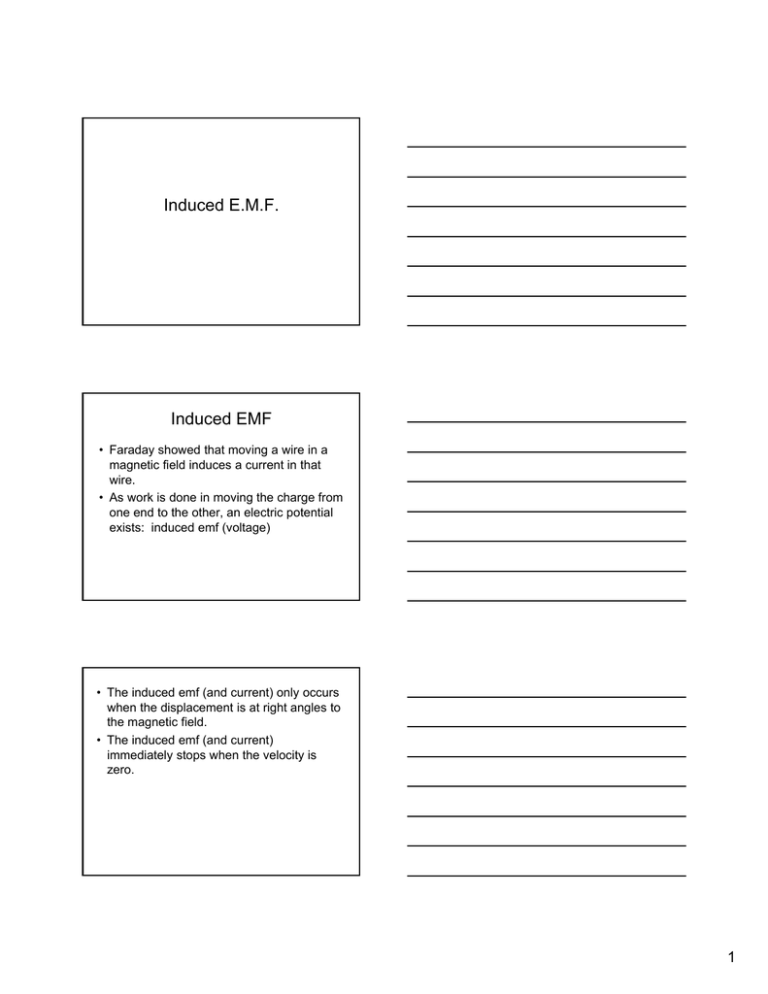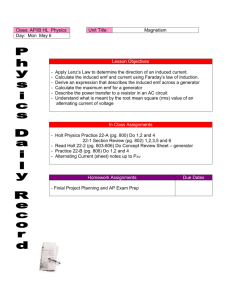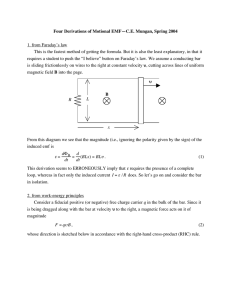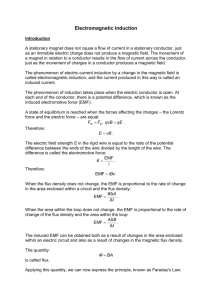Induced E.M.F. Induced EMF
advertisement

Induced E.M.F. Induced EMF • Faraday showed that moving a wire in a magnetic field induces a current in that wire. • As work is done in moving the charge from one end to the other, an electric potential exists: induced emf (voltage) • The induced emf (and current) only occurs when the displacement is at right angles to the magnetic field. • The induced emf (and current) immediately stops when the velocity is zero. 1 • The strength of the emf produced depends on: – The speed of the movement – The strength of the magnetic flux density – Number of turns in the coil (number of wires) – The area of the coil Magnetic Flux • The number of magnetic field lines passing through an area. • Faraday realized that the magnitude of the induced emf was not proportional to the rate of change of the magnetic field • The magnitude of the induced emf is related to the rate of change of magnetic flux (or flux linkage for more than one wire) 2 Faraday related the emf to magnetic flux, which is an area. BA cos Magnetic flux Magnetic field Units: weber, Wb Area Magnetic flux is a measure of the number of lines of magnetic force passing through an area. Faraday’s Law • The magnitude of the induced emf in a circuit is directly proportional to the rate of change of magnetic flux or flux-linkage. N t Heinrich Lenz • In 1834, Russian physicist Lenz applied the Law of Conservation of Energy to determine the direction of the induced emf for all types of conductors. 3 Lenz’s Law • The direction of the induced emf is such that the current it causes to flow opposes the change producing it. • In other words, the resulting emf is in the opposite direction of the motion. • Combining Faraday’s law and Lenz’s law then gives us equation for induced emf. t N t Example 1 • The magnetic flux through a coil of wire containing 5 loops, changes from -25 Wb to 15 Wb in 0.12 s. What is the induced emf in the coil? t (15 Wb 25 Wb) (5) 1667 V 0.12 s N 4






